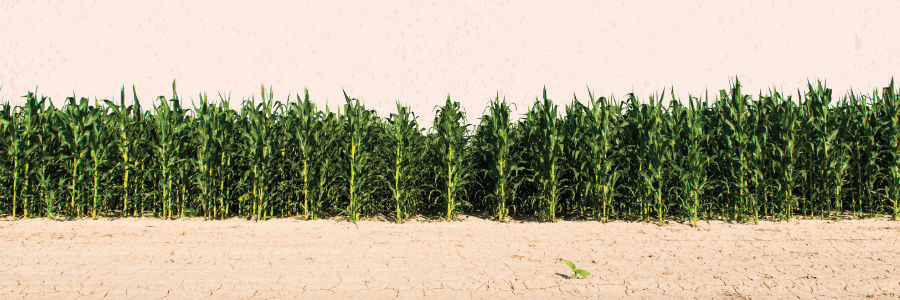


Sign-up for {N}power to get exclusive discounts, newsletters, members-only features, and more!

It's grilling season, and there's one crop that dominates the menu, even when we're not serving it on the cob. Burgers and brats, salad dressing and barbecue sauce, sodas, and alcoholic beverages, they all have this in common: corn.1 2

Corn makes up 95 percent of the total feed grain used in dairy, beef, poultry, and pork production and it's an ingredient in countless processed foods, in the form of high-fructose corn syrup, corn starch, corn oil, and even citric acid (there are approximately 90 food additives that are derived from corn; so if you eat something that comes in a bag or box, chances are, you’re eating something that was made from corn). With more than 90 million acres planted, it’s the number one crop grown in the U.S., and more than 90 percent of it relies on GMO herbicide-tolerant and/or insect-resistant seeds.3 4 It is also a crop that relies heavily on chemical fertilizers.
After World War II, U.S. factories had an excess of ammonium nitrate used to make explosives, and as it happens, it was also good at adding nitrogen—required by plants to grow—to the soil. So chemical fertilizer was introduced to agriculture, and at the front of the line were high-yield cultivars of corn. Marrying the two meant yields exploded, and the Corn Belt has never looked back. 5 6 Now, the region must look forward, to a future where one of its most valuable resources, the soil, is increasingly degraded.
The long-term loss of soil fertility in conventional industrial farming systems can be hard to measure, obscured by the constant chemical input of nutrients. Researchers from the University of Colorado addressed this question in a recent study and determined that 30 percent of the fertilizer currently applied to farmland is just to compensate for long-term losses in soil fertility due to erosion and loss of soil organic matter, a result of industrial farming methods that rely on chemical inputs, like synthetic fertilizers, and monocropping. The price tag for the fertilizer required to compensate for lost soil fertility is about half a billion dollars per year, and that's not including the environmental costs that synthetic fertilizer incurs.7 8
Consider a sampling of the externalized costs of synthetic fertilizer to the environment and human health:
There are approaches to farming that restore soil fertility, improve water holding capacity, decrease emissions, and sequester carbon.8 Crop diversity, nitrogen-fixing cover crops, and compost are all essential components of organic farming—and counterparts to industrial agriculture’s most destructive practices.17 18 Managed, rotational grazing of livestock plays a pivotal role in restoring degraded lands and increasing carbon sequestration through factors including recycling plant materials, naturally fertilizing the soil, depositing organic matter, and reducing nutrient losses from the soil.19 20 21
Pasture-based dairy, 100% grass-fed, and 100 percent organic produce—these are food choices that represent increased value to farmers, the environment, animal welfare, and human health. So as you shop for your next summer feast, what’s your grocery bill going to reflect? Will it be the values you believe in today or the hidden price the next generation will pay tomorrow?



Sign-up for {N}power to get exclusive discounts, newsletters, members-only features, and more!